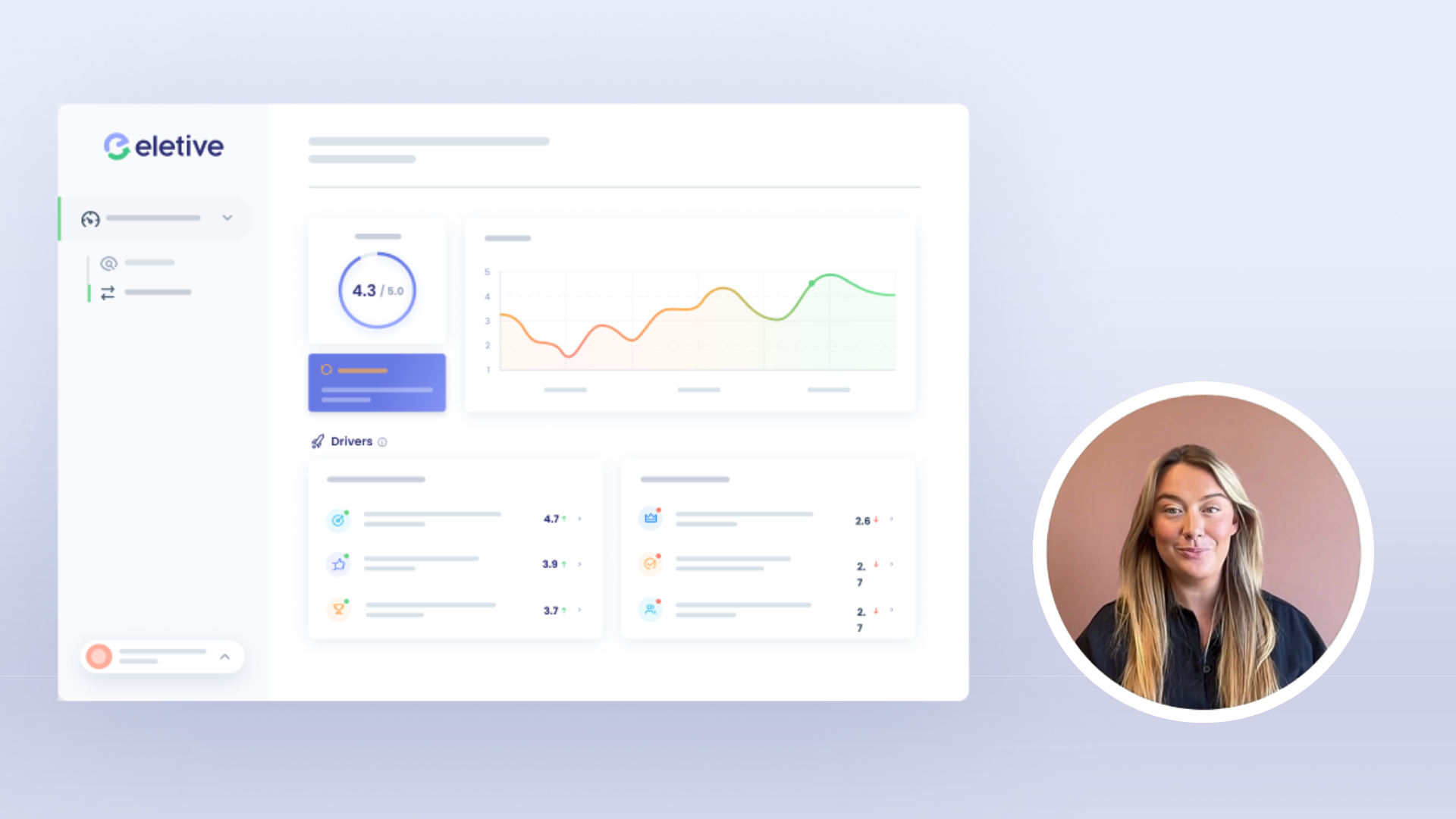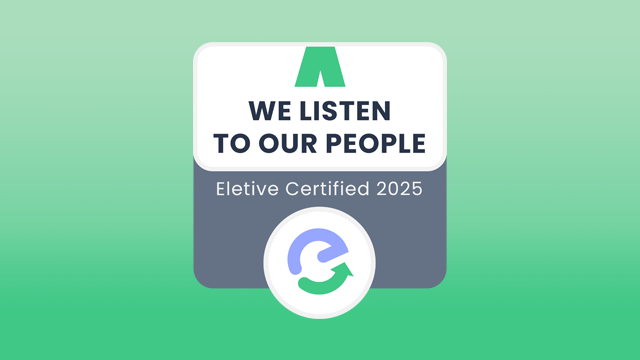By harmonising individual efforts with organisational objectives, OKR tools facilitate a successful roadmap for achieving business goals.
This article will guide you through the essential steps to effectively implement OKR tools in your organisation.
Understanding the basics of OKR tools
Before diving into the implementation process, it’s important to grasp the core concept of OKRs. OKRs serve as a framework to define measurable goals and track their outcomes, ensuring that everyone in the organisation is working towards the same targets.
Recommended reading: OKRs - A complete guide to objectives and key results
OKRs:format(png)/f/288714721386412/250b0712e8/about_okrs__1_.png)
Defining OKR tools
OKR tools provide a structured approach for defining objectives, quantifying key results, and maintaining visibility across all levels of a business. These tools typically include features that facilitate goal setting, progress tracking, and communication related to those objectives.
At their core, OKRs are designed to answer two fundamental questions: What do we want to achieve (the objective), and how will we measure our success (the key results)?
This clear distinction helps teams focus on outcomes rather than activities. Furthermore, many OKR tools come equipped with dashboards and reporting features that allow teams to visualise their progress in real-time, making it easier to adjust strategies as needed and stay agile in a fast-paced business environment.
The importance of OKR tools in business
The adoption of OKR tools can lead to enhanced transparency and alignment within a business. This is particularly beneficial in larger organisations where multiple teams and departments may have differing priorities. By using OKR tools, businesses can create a cohesive strategy that connects everyday tasks directly to broader organisational goals.
OKR tools contribute to a culture of accountability. When team members know their objectives and how their performance will be measured, they are more likely to take ownership of their roles and strive for excellence. This sense of accountability is further reinforced through regular check-ins and updates, which encourage open communication and foster a supportive environment where feedback is valued. The iterative nature of OKRs allows teams to celebrate small wins along the way, creating motivation and momentum that can drive further success.
Moreover, the flexibility of OKR tools allows organisations to adapt their objectives as market conditions change or as new opportunities arise. This adaptability is crucial in today's dynamic business landscape, where agility can be a significant competitive advantage. By regularly reviewing and adjusting their OKRs, teams can ensure that they remain aligned with the organisation's vision and responsive to external challenges, ultimately leading to sustained growth and innovation.
Assessing your business needs
Every organisation is unique, and it's crucial to assess your specific needs before implementing an OKR tool. This stage involves evaluating existing goals and identifying what you hope to achieve with the new system. Taking the time to thoroughly understand your business landscape can lead to a more tailored approach that maximises the effectiveness of the OKR framework.
Identifying your business goals
Begin by articulating your business goals. Consider both short-term and long-term objectives, and ensure they align with the overall mission of the organisation. Engaging key stakeholders in this process can yield valuable insights and foster buy-in for the new approach. This collaborative effort not only helps in pinpointing the most pressing goals but also encourages a sense of ownership among team members, which can significantly enhance motivation and commitment.
Frameworks like SWOT analysis can help clarify where your organisation currently stands and how specific OKRs can help close existing gaps or capitalise on strengths. Additionally, it may be beneficial to conduct interviews or surveys with team members across different departments to gather diverse perspectives on what they believe the organisation should prioritise. This inclusive approach can uncover hidden challenges and opportunities that may not be immediately apparent.
Evaluating your current tools
Before implementing a new OKR tool, evaluate the effectiveness of your current tools. Are they adequately facilitating goal tracking and communication? Look for gaps in features that might deter your team's ability to achieve their objectives. It's important to not only assess the technical capabilities of these tools but also their usability and how well they integrate with existing workflows.
Assess user satisfaction with current systems.
Identify any limitations in functionality.
Determine flexibility and scalability to grow with your organisation.
Understanding these factors will drive the selection of a more effective OKR tool that meets the unique needs of your business. Consider conducting a pilot program with a select group of users to gather feedback on potential new tools. This hands-on approach can provide insights into how well the tool fits into your team's daily operations and whether it enhances productivity or complicates processes. Additionally, keep an eye on emerging trends in OKR technology, as new features and integrations can offer significant advantages that align with your evolving business needs.
Choosing the right OKR tool
With a clear understanding of your needs, the next step involves selecting the best OKR tool for those needs. The marketplace offers various options, each with its features and benefits.
Key features to look for
When considering which OKR tool to implement, focus on key features that enhance usability and effectiveness. Important criteria to assess include:
User-friendly interface: The tool should be easy to navigate for all team members.
Goal-setting capabilities: It should allow you to set, track, and edit objectives and key results.
Integration with existing systems: Ensure the chosen tool can easily connect with other software being used in your organisation.
Reporting and analytics: The tool should offer robust reporting features to track progress and outcomes effectively.
Learn more about Eletive's OKR features >>
Comparing different OKR tools
Once you have identified key features, compile a shortlist of OKR tools that meet these requirements. Set up demonstrations where possible and involve team members to gather diverse opinions.
Additionally, read reviews, case studies, and testimonials from other businesses. This research will offer insights into real-world applications, helping you to make an informed decision when selecting your OKR tool.
Another aspect to consider is the level of customer support provided by the tool's vendor. A responsive support team can make a significant difference, especially during the initial implementation phase. Look for tools that offer comprehensive onboarding resources, including tutorials, webinars, and dedicated account managers. These resources can help your team get up to speed quickly and ensure that you are using the tool to its fullest potential.
Moreover, consider the scalability of the OKR tool. As your organisation grows, your objectives and key results may evolve. A flexible tool that can adapt to changing needs—whether through additional features, user capacity, or customisation options—will be invaluable in maintaining alignment across your teams. This foresight can save you from the hassle of switching tools down the line, allowing for a smoother transition as your business objectives expand and become more complex.
Implementing the OKR tool in your business
Having chosen the appropriate OKR tool, the next phase is the implementation process. This requires strategic planning and engagement across various departments.
Planning the implementation process
You should create a rollout plan that outlines how and when the new OKR tool will be introduced. This plan must include timelines, responsible parties, and communication strategies to keep everyone informed. A well-thought-out plan mitigates disruption and helps ensure a smooth transition to the new system.
Consider a pilot phase with a specific team to resolve any potential issues before a full-scale implementation. Gathering feedback from this initial launch will be invaluable for refining the process. Additionally, it may be beneficial to set up regular check-ins during this pilot phase to monitor progress and address any concerns that arise. This proactive approach not only helps in troubleshooting but also fosters a sense of ownership among team members, making them feel more invested in the success of the new tool.
Training your team on the new Tool
Training is crucial for successful adoption. Provide comprehensive training sessions to ensure that all employees are comfortable using the new OKR tool. Resources like video tutorials, manuals, and workshops can facilitate effective learning.
Encourage a culture of openness by allowing team members to ask questions and share their experiences as they adapt to the new system. Ongoing support is essential for maintaining engagement with the tool throughout the organisation. Consider establishing a mentorship program where more experienced users can assist those who are less familiar with the OKR framework. This not only enhances learning but also builds camaraderie among team members, as they collaborate to achieve their objectives. Furthermore, regular follow-up sessions can be scheduled to revisit key concepts and share success stories, reinforcing the value of the OKR tool in driving performance and alignment within the company.
Monitoring and adjusting your OKR tool use
The final step in implementing OKR tools is establishing a system for continuous monitoring and adjustment. This ensures that the system remains relevant and effective in achieving your business goals.
Regularly reviewing your OKR progress
Set up regular check-ins, such as monthly or quarterly reviews, to discuss progress on the established OKRs. This creates an environment of accountability and encourages continuous improvement. During these discussions, teams can assess what’s working, what’s not, and where adjustments may be necessary.
Utilising the reporting features of your OKR tool can provide valuable insights to facilitate these reviews, enabling data-driven decision-making.
Making necessary adjustments to your OKR strategy
As business needs evolve, so too should your OKR strategy. Be willing to adjust objectives and key results based on what you learn from progress reviews. Flexibility is critical in maintaining relevance, particularly in larger organisations where market dynamics and internal priorities can shift rapidly.
Ultimately, fostering a culture of adaptability along with a structured approach to OKRs will leverage the full potential of the tools you implement, ensuring sustained success across your business.
:format(png)/f/288714721386412/8bc74e1c86/ewebinar__1_.png)
Increase engagement with Eletive

As Team Manager, Customer Success at Eletive Emelie is helping organisations build workplaces where people thrive. In her role, she enables delight among our customers and leads the Customer Success team to excellence.

























:format(jpeg)/f/288714721386412/2c015ae1c2/blog-how-to-implement-okr-tools-for-medium-and-large-businesses-hero_media.jpg)
:format(png)/f/288714721386412/70a5012076/blog-eletive-secures-growth-investment-from-accel-kkr-hero_media.png)
:format(jpeg)/f/288714721386412/a906f14dff/blog-hr-trends-2026-ai-data-and-employee-experience-hero_media.jpg)
:format(png)/f/288714721386412/9f8e0a2347/blog-beyond-the-hype-the-new-rules-of-people-success-in-a-global-ai-powered-hero_media.png)